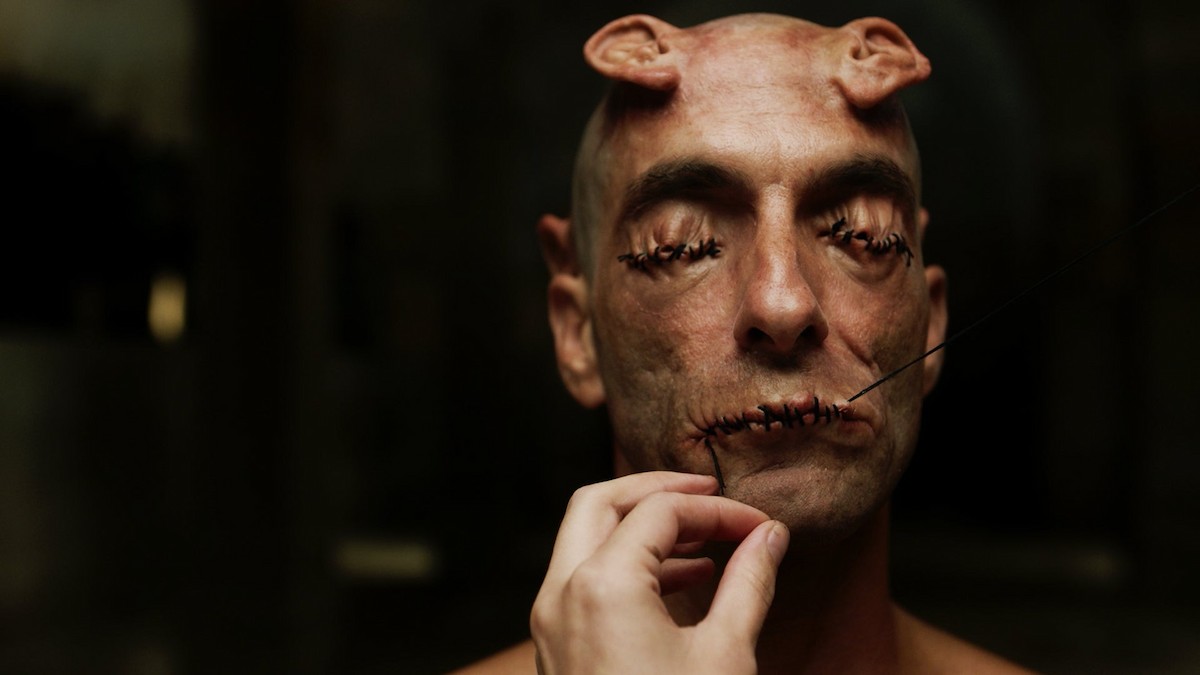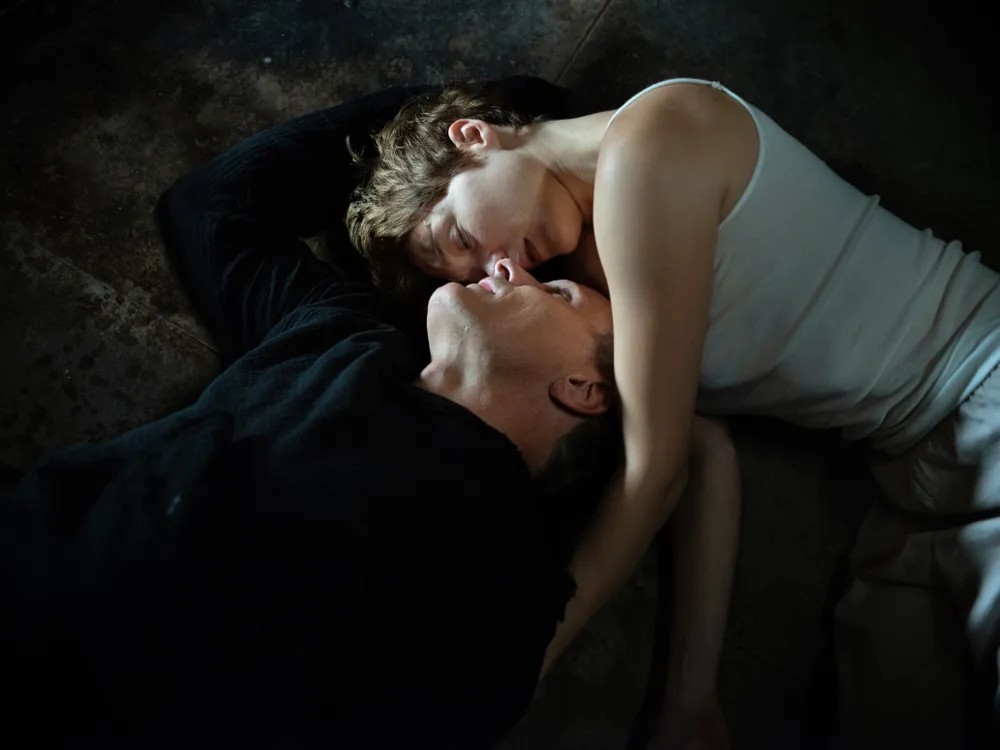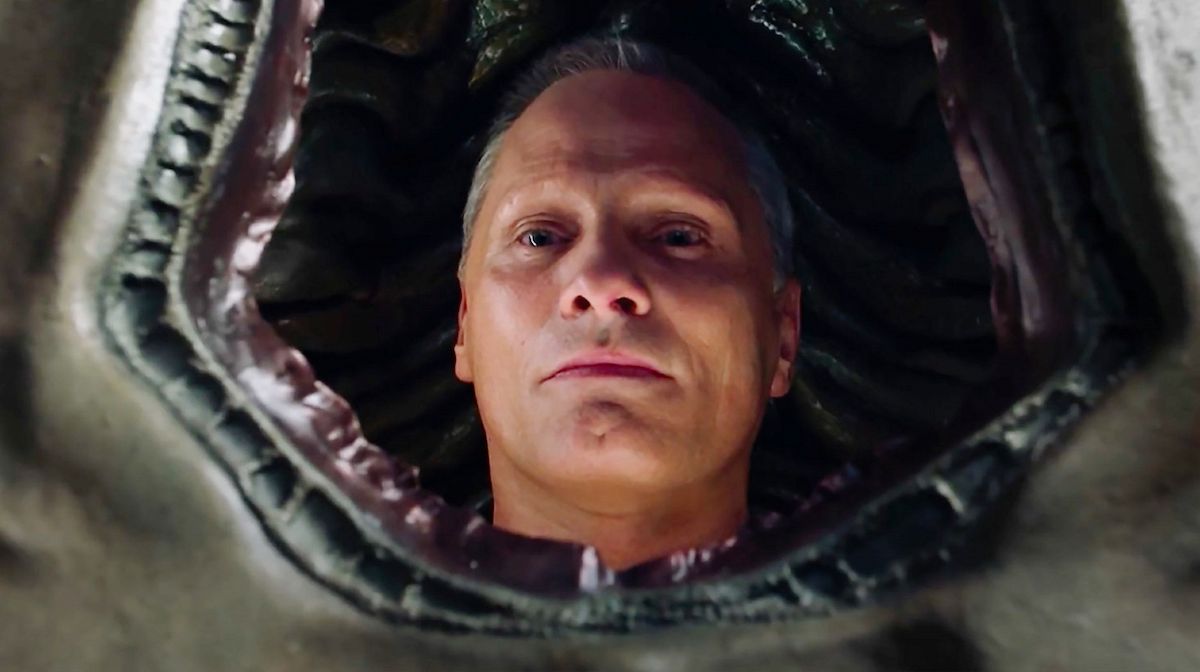Crimes of the Future succeeds in its determination to excite the worst parts of us. The film is ingratiating. The slicing of human flesh for pleasure disgusts and pleases. It’s merely an entrée into this gruesome world of painlessness, forsaken microbes, and exhibitionist surgery.
We’re transported into a world by a film that touches on so many issues of concern today. It’s a relevant and intensely different look at sex, evolution, choice, bureaucracy, standards of beauty, the ravages of climate change, death.
Terribly inventive, from concept to execution. We’re primed with a child consuming the rim of a plastic wastebasket and an act of filicide. The future is sparse and grim. The payoff comes in the form of a simple acceptance.
An acceptance of one’s evolving body. An acceptance of the future.
“Surgery is the new sex,” insists Timlin (Kristen Stewart) after indulging Saul Tenser’s (Viggo Mortensen) exhibitionist organ extraction. She can’t help but get turned on.

Our complex relationship with sex and violence is projected in sensual slicing and fresh running blood. A pure pleasure erupts from the consenting victim. I bought it.
An interesting relationship exists between pain and pleasure – in our present reality and for those that feel pain in this future world. That’s undeniable. Fight the pain, and pleasure absconds. Accept it and pleasure awaits.
This relationship is tangible for viewers and we feel it with every slice. The intense bracing, the emotional release, the pleasure of returning to comfort.
However, for the vast majority of characters in the film, who have evolved past pain, it serves as pure pleasure. The “old sex” won’t cut it anymore. They demand something more exhilarating.
Hesitance awaits anyone wishing to label this body horror.
Certainly from our perspective, horrors are performed on various bodies over the course of Crimes of the Future. Though, from the twisted reality of the world, people embrace cutting open flesh indifferently and regularly consent to it.
It’s so commonplace, it’s elevated to a form of art. And clutched dearly. As much as anyone might regard a Picasso.

Forget the salacious ones, dragging a knife across a thigh or teetering a blade to the bone of a foot for attention. There are high concept artists at work. Exhibitionists of the most intimate nature.
Effectively, with the conflation of sex and surgery, performers are testing the limits of the intimate experience in public. Slicing, prying, extracting. Acts of sex. Acts of surgery.
So many desire to do it too. They fawn over Saul Tenser, practically begging to be in his show. Except, he doesn’t want his extraneous organs or his evolving body. He has to exhibit his surgeries because he has to exorcise his tattooed growths. That’s his imperative. He harnesses his pain to make a statement, to make art.
I leave it to you to interpret the meaning of that art.
It’s Saul’s notoriety as the artist in pain that wraps him up in a secret society of plastic eaters, embracing the future of humankind, and a government conspiracy to hold back the tide of evolution by disrupting an autopsy and murdering in cold blood.
Time and time again, Crimes of the Future begs us to ask ourselves tough questions. Minute details invariably serve as connections to a larger web of truths about the world we’re headed for.
A world suffocated by plastic, ravaged by a climate disaster of our own making. Nature doesn’t concede its will to the mind of sapiens. For sapiens is nature. Instead, it pulls harder on the reigns of evolution. Forcing humankind to adapt to this new environment. To grow organs adept to consuming and processing plastic waste.
Crimes of the Future proves to be an exercise in philosophy and manages to provide access into a world that seems all too possible. The ideas presented in the film are more uncomfortable than the visual depictions of guts and blood.
In the end, Saul Tenser is faced with a choice. Defy the government, allow a new digestive system to grow, and join the plastic eaters or defy his body, continue cutting out organs, and die of starvation.
The final decision paired with a black and white close-up image of Saul’s pointed profile is beautiful – perhaps even triumphant. We’re here for the personal and that’s what we get.

Images courtesy of Neon




